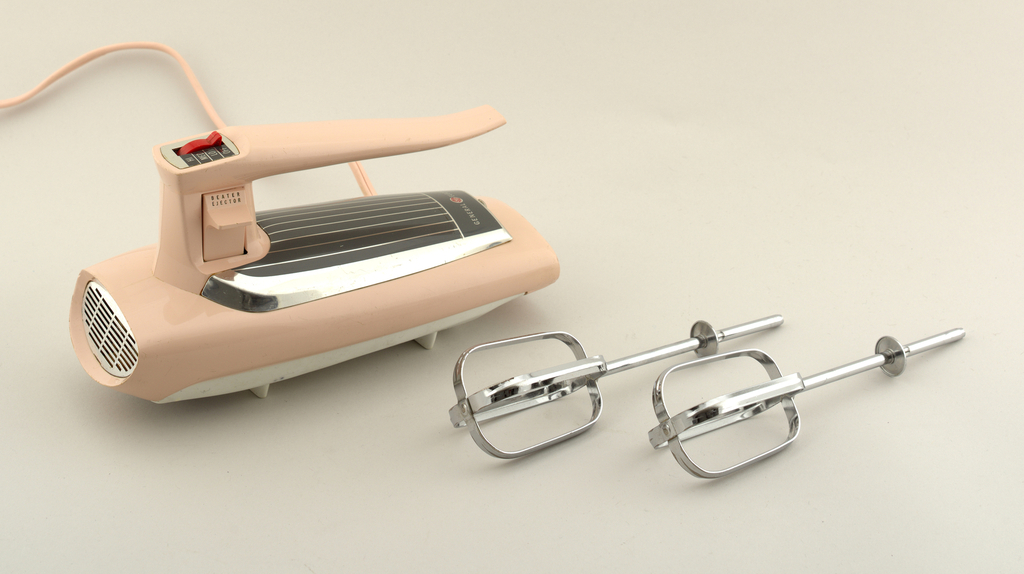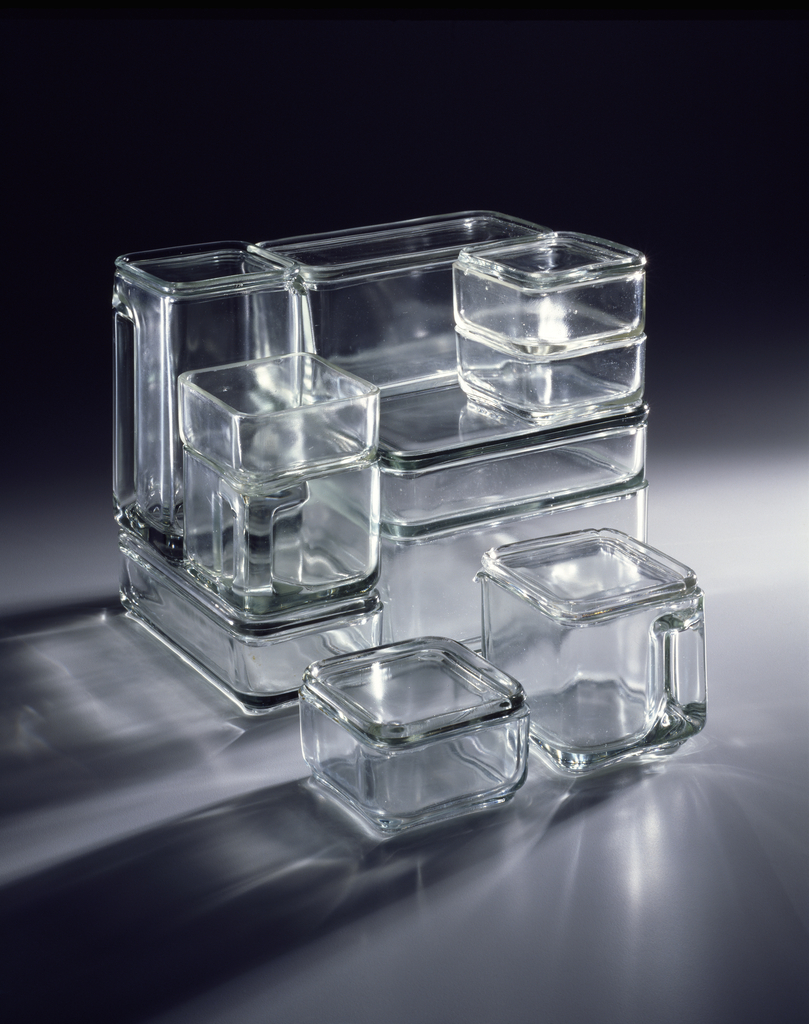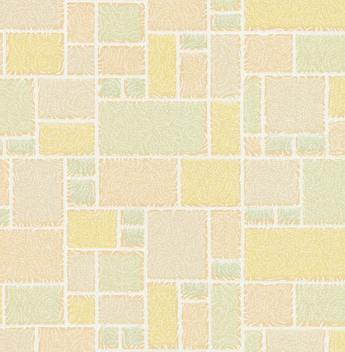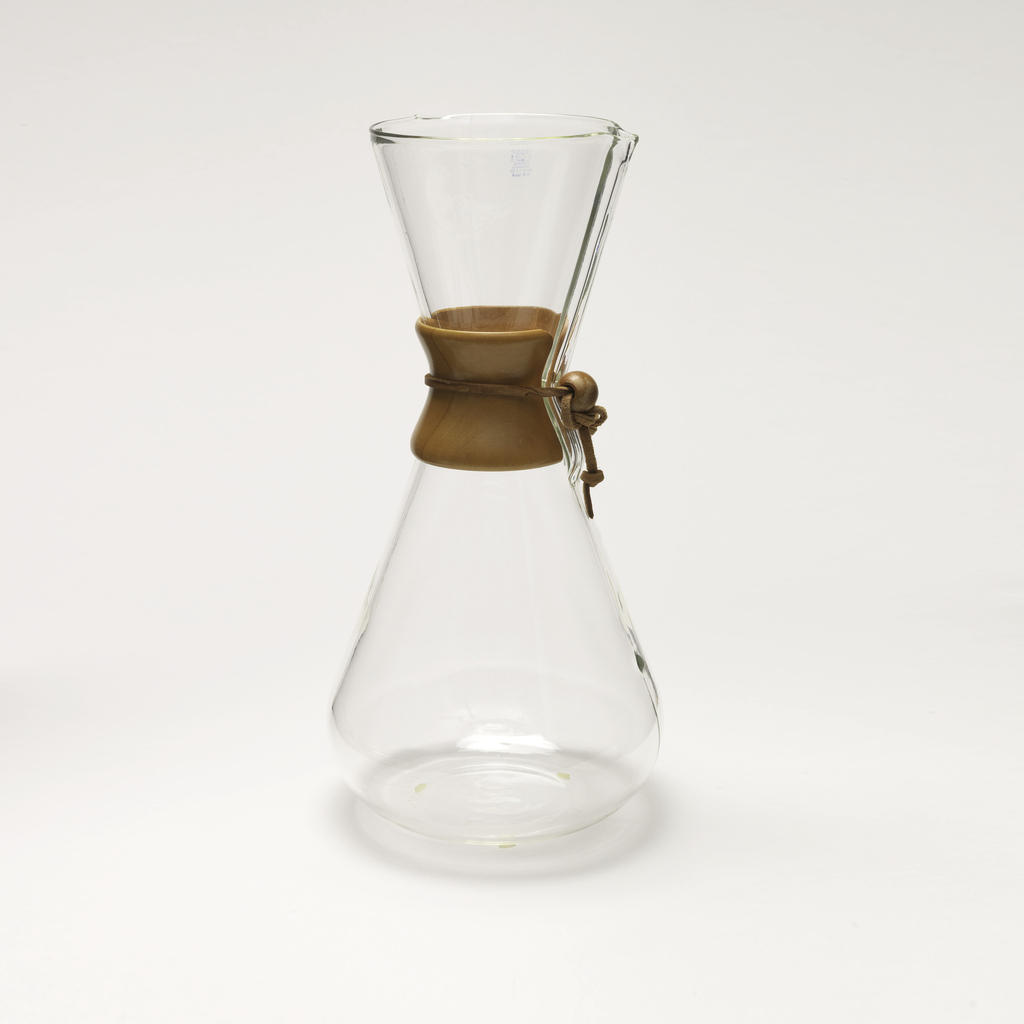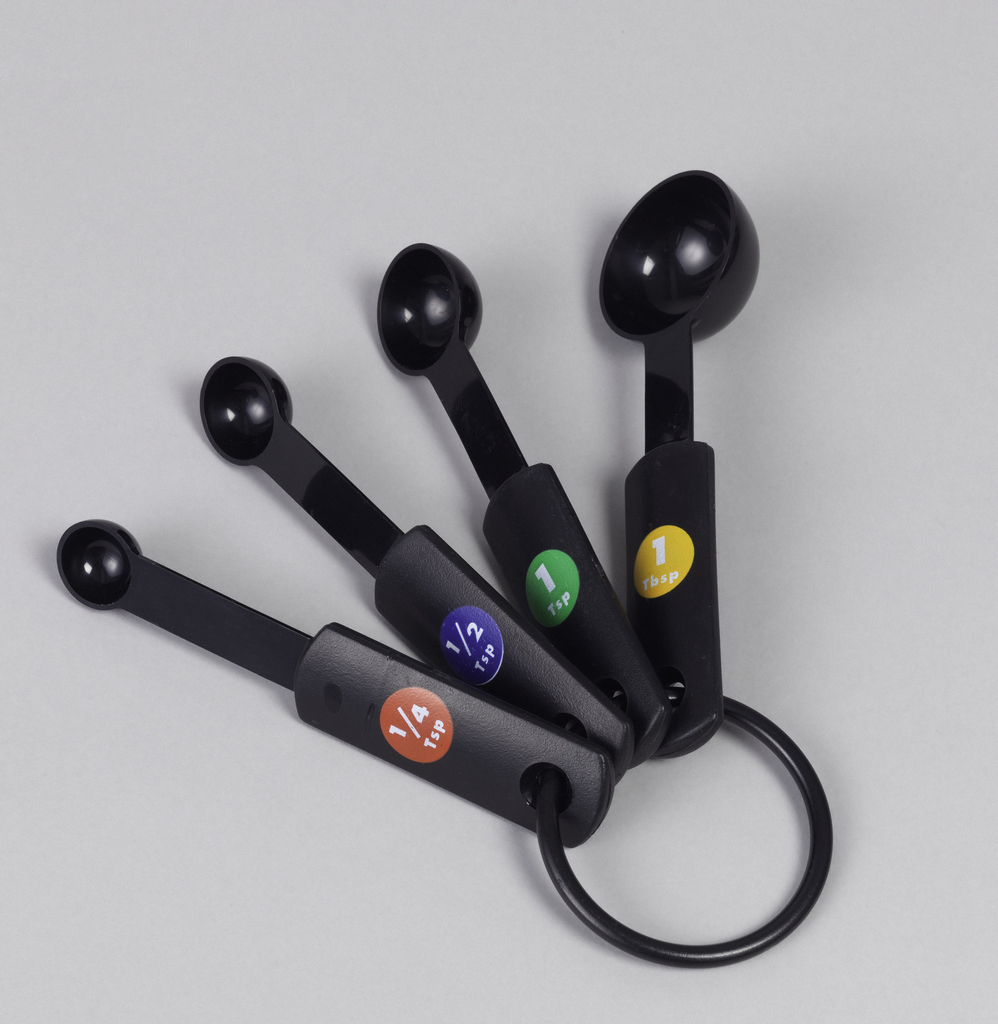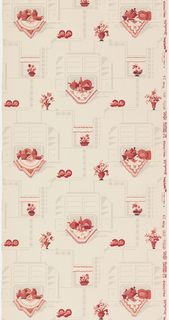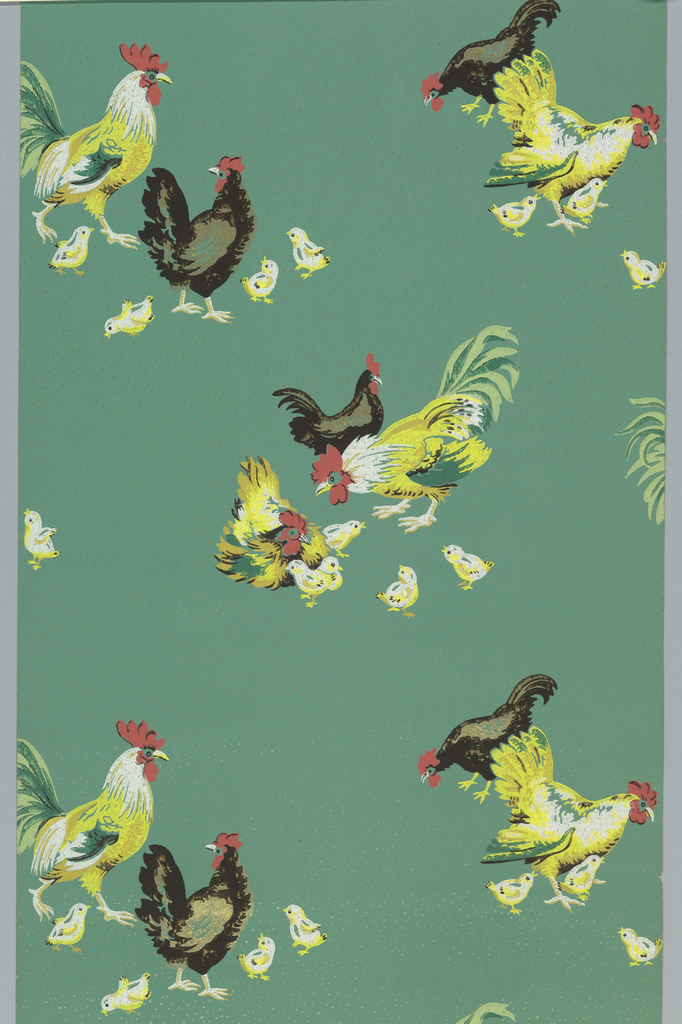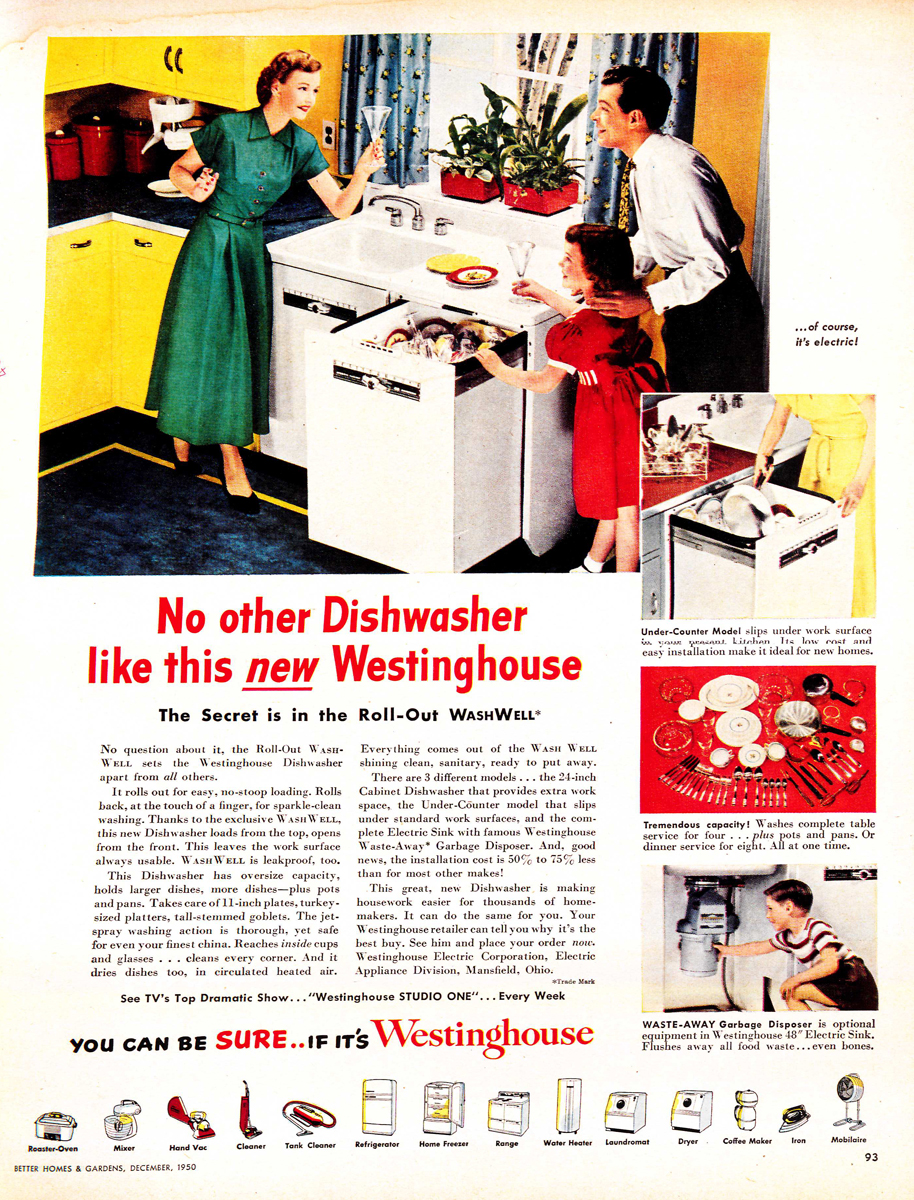In 1955 General Electric released a line of kitchen appliances available in what they called “mix-and-match colors.” From canary yellow dishwashers to cadet blue refrigerators, one could construct an entire kitchen with G.E.’s colorful products. A two-page spread in Better Homes and Gardens from 1956 explained how one could entirely modernize his or her kitchen...
Author: Zenia Malmer The ‘Kubus’ clear glass stacking and modular storage system was created in 1938 by German designer Wilhelm Wagenfeld (1900-90), who frequented the Bauhaus school in the former Weimar Republic. Kubus, which was manufactured by Lausitzer Glasverein, was one of Wagenfeld’s most well-known affordable designs in pressed glass that he created for commercial...
I thought this was a charming pattern, with its pastel-colored geometric background pattern reminiscent of tilework. The scrolling white lines covering the surface give the design a textural look, softening the appearance of all the hard lines. They also remind me of the Sno Ball pastries with the coconut-covered exterior. This was a very inexpensive...
This coffee maker was devised by chemist and inventor, Dr. Peter Schlumbohm, for the Chemex® Corporation. It is made of heat-resistant non-porous borosilicate glass, and surrounded by a wood collar tied with a leather thong, that serves as an insulated handle with which to pour the hot beverage. The ingenious use of glass allows the...
In celebration of the museum’s inaugural Cooper Hewitt Lab: Design Access taking place in the Barbara and Morton Mandel Design Gallery through February 15, we are highlighting innovative accessible design from the permanent collection. Peeling potatoes is tedious enough without having to do battle with ill-designed kitchen gadgets. Why hadn’t these objects evolved to accommodate...
Now that Thanksgiving has arrived, the space of our kitchens is about to be center stage for friends, family, and most importantly, food. All of the most important trappings for Thanksgiving revolve around food and its accompaniments, such as dishware, which, are the center pieces of this kitchen sidewall from the mid 1930’s. Seemingly inlayed...
The 1950s were the last big hey-day for wallpaper usage. People still papered all four walls and complementary wallpapers were popular. This included a bolder pattern on one wall with a coordinating paper on the three adjoining walls. Another popular option was to paper two adjoining rooms with complementary papers. The fifties was also the...
A coffee pot, a water pump, a cast iron stove, and fish are just some of the things scattered along the length of this border. They are done in a strong graphic style, and they float haphazardly against a collection of irregular polygons in yellow, green, brown, and red, the same colors used to highlight...
“The Battle of the Centuries” was a dish washing contest between Mrs. Drudge and Mrs. Modern, between hand washing vs. electric dishwashers at the 1939/40 New York World’s Fair. This contest promoted all the benefits of modern appliances and is part of the history of new and improved technology in the modern age. The Cooper Hewitt Library...
